
Plant
17:47, 21-May-2019
Plants & Nations: Yemen
By Ding Qian
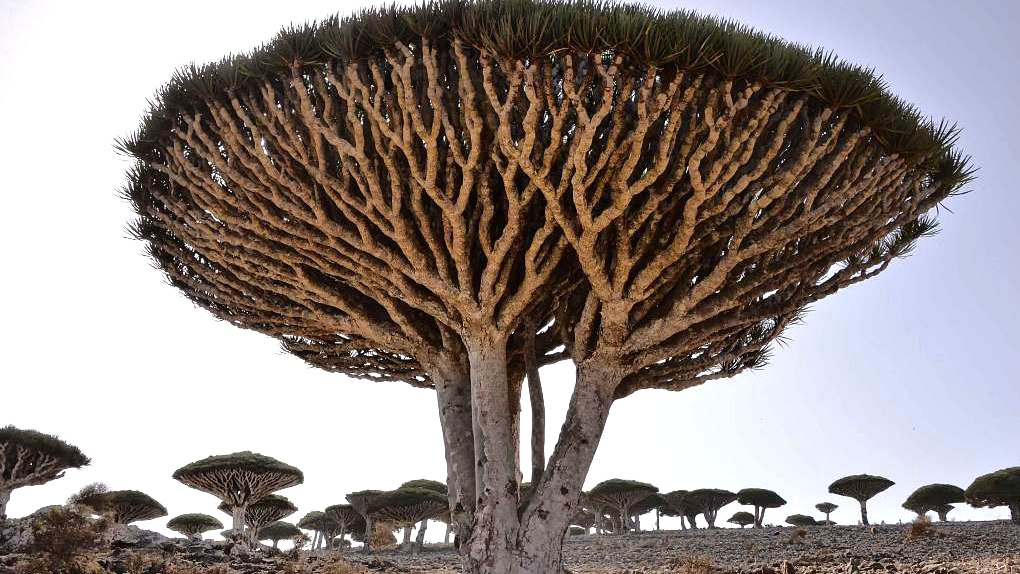
Located at the southern end of the Arabian Peninsula, Yemen has over 200 islands including one of the most beautiful places on the planet- Socotra.
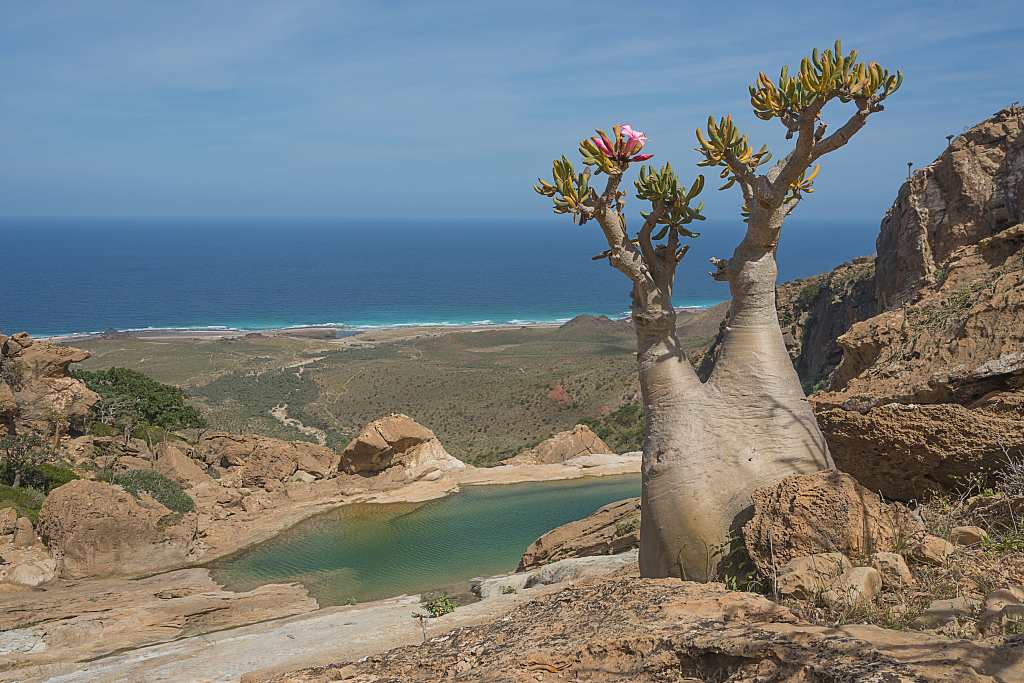
Yemen /VCG Photo
Yemen /VCG Photo
Yemen was also the first country to cultivate coffee commercially. You must have heard of or tasted "Mocha coffee"- a chocolaty coffee drink, but in fact the "true" Mocha coffee comes from Yemen's iconic port town of Mocha or Al-Makha. Between the 15th and the 18th centuries, the port was one of the world's famous coffee markets. Hence, the coffee from Mocha started to be simply called Mocha coffee.
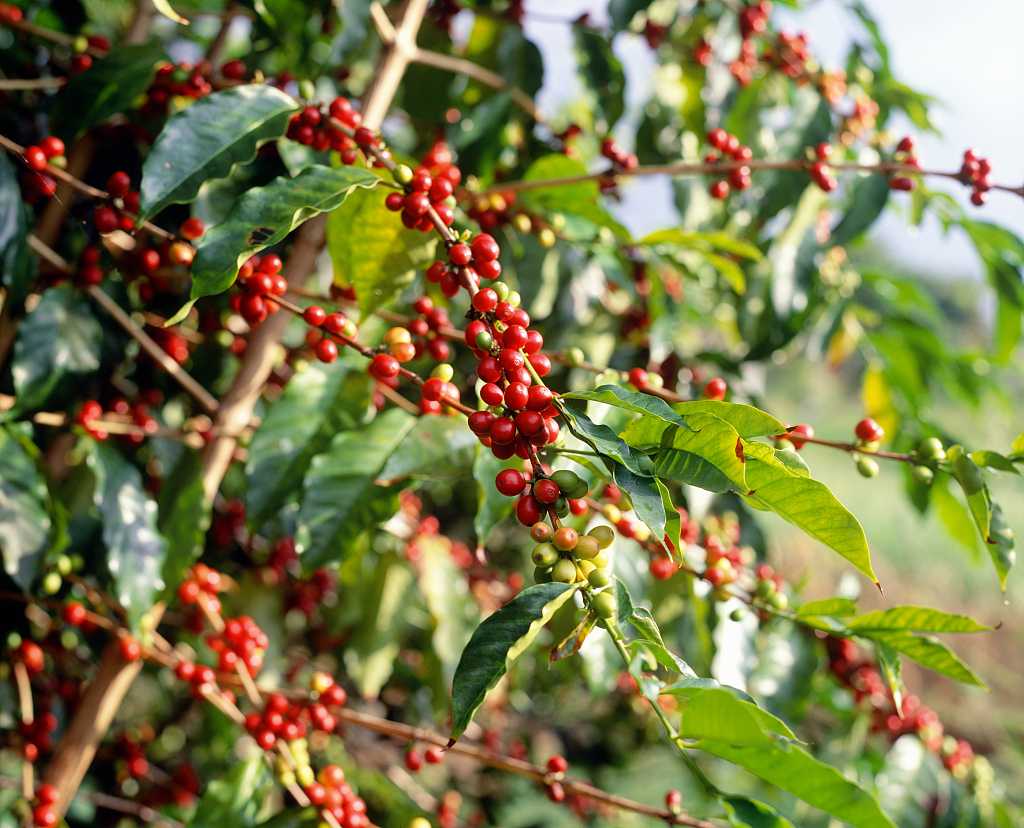
Coffee plant /VCG Photo
Coffee plant /VCG Photo
In this article, we introduce three plants that have shaped the country's image and history.
Arabian Coffee
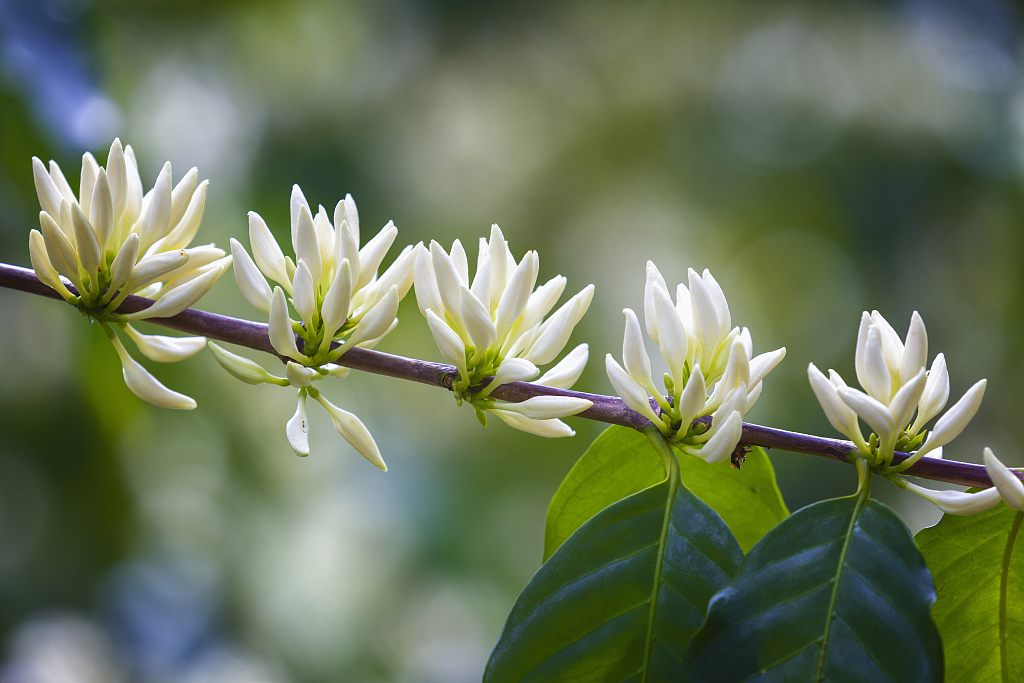
Coffee flowers /VCG Photo
Coffee flowers /VCG Photo
Arabian coffee, also known as Arabica coffee, is a species of Coffea. Although these plants are native to southwestern highlands of Ethiopia, it was in Yemen that they were developed into the coffee we know today. For hundreds of years, Yemen was the only source of coffee. By 1650, coffee became trendy in Europe. Now the plant is widely naturalized in many parts of Africa, Asia, and Latin America.
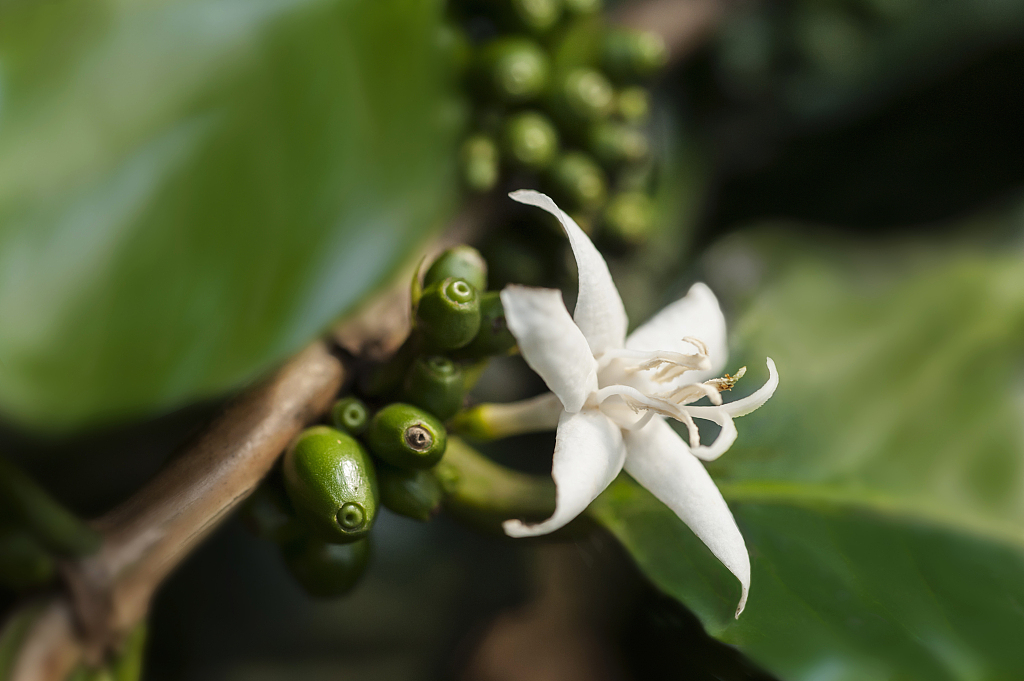
Coffee flower /VCG Photo
Coffee flower /VCG Photo
Wild coffee plants can grow between nine to 12 meters tall. The flowers are white and highly fragrant but only last for a few days. The berries of coffee are dark green at first, later they change color to deep red when they are ripe.
Dragon blood tree
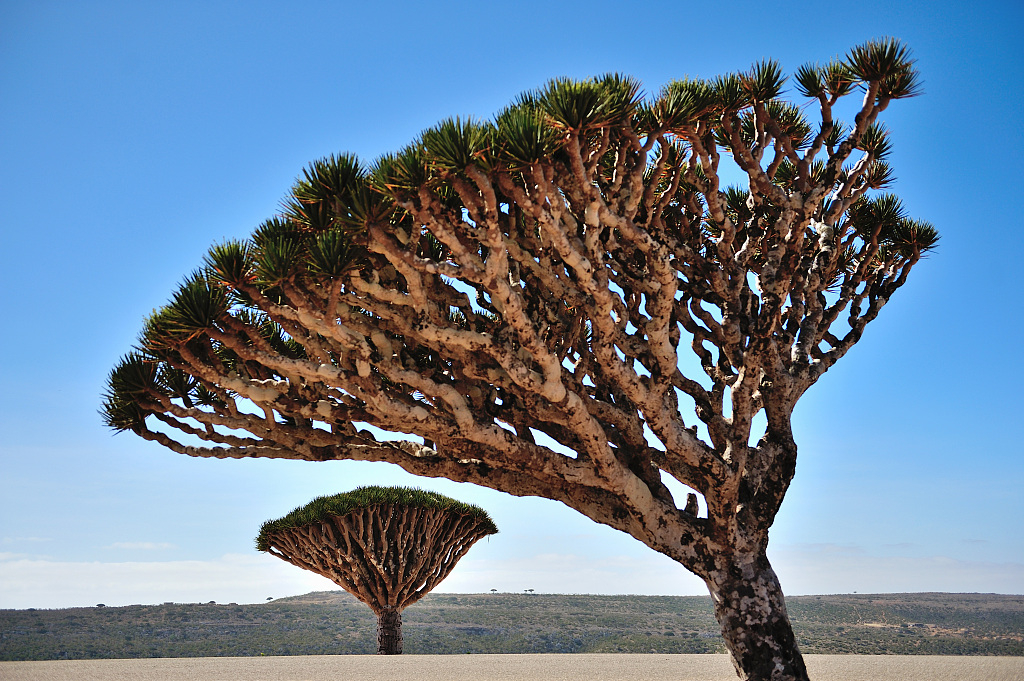
Dragon blood trees /VCG Photo
Dragon blood trees /VCG Photo
The dragon blood tree not only bears a fascinating name but also a unique and exotic appearance. The tree looks like an uprightly held umbrella.
The berries of the plant exude resin of deep red color, hence, the plant is named dragon blood tree. The red sap is known as dragon's blood. The locals of the Socotra island use dragon's blood as a medicine and dye. In ancient times, it was used in ritual magic since it was believed to be the blood of the dragon.
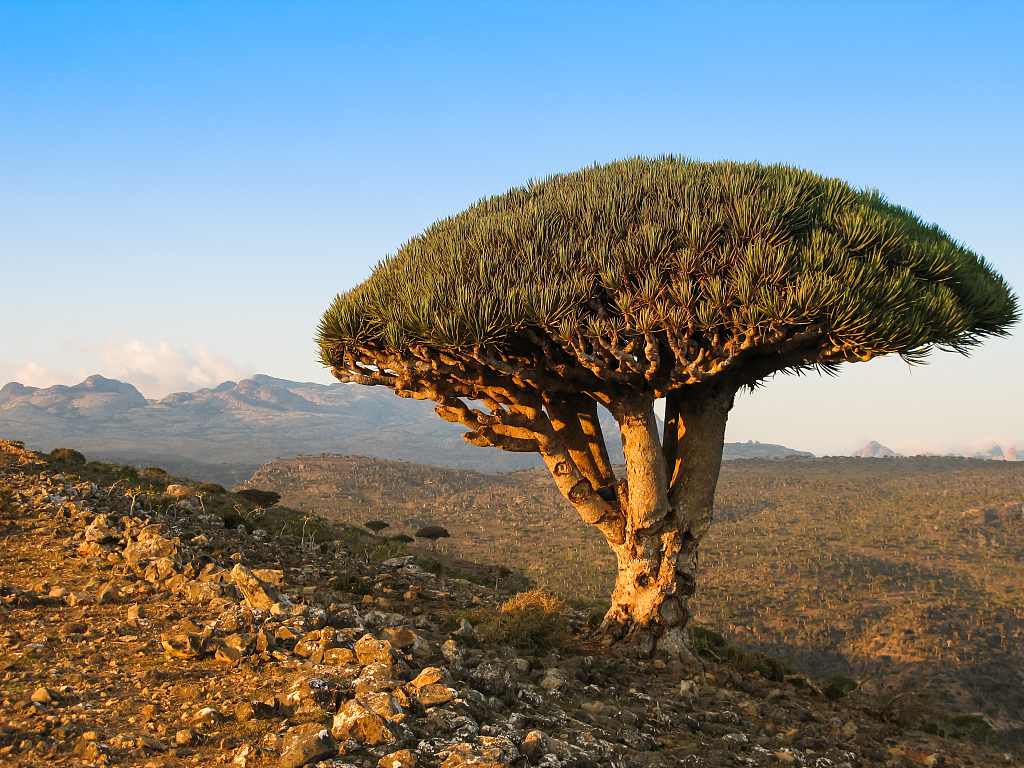
Dragon blood tree /VCG Photo
Dragon blood tree /VCG Photo
The tree produces small clusters of green or white flowers. The fleshy berries of the tree are usually eaten by birds.
Human activities including overgrazing and harvesting of its resin have posed a severe threat to the population of dragon blood trees. The tree is essential to the ecology of the Socotra archipelago which is also listed as a World Heritage Site.
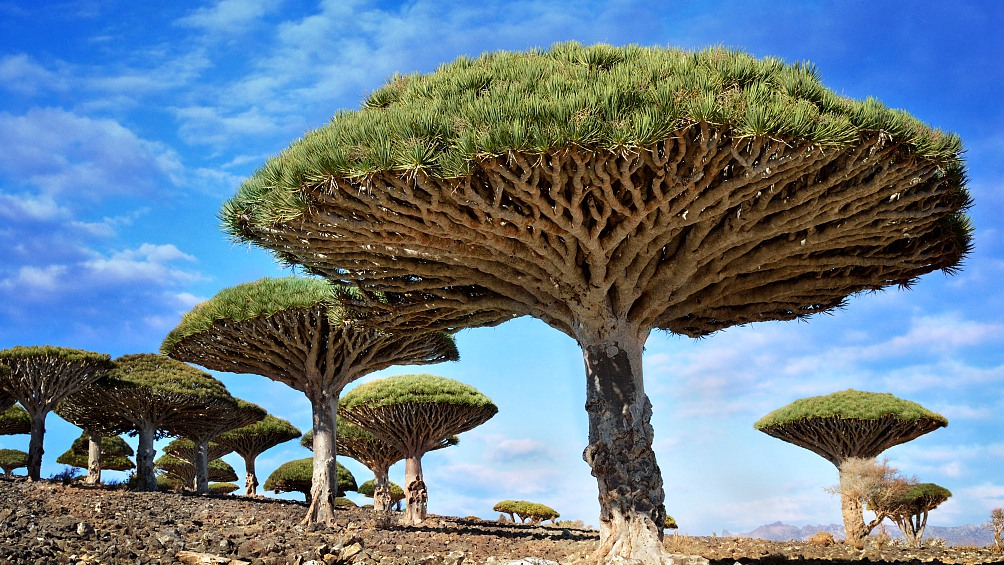
Dragon blood tree /VCG Photo
Dragon blood tree /VCG Photo
Qat
Qat is a flowering plant that has been grown for centuries in the Arabian Peninsula. In Yemen, Qat is traditionally used as a socializing drug. It is widely cultivated in the country which has exacerbated the water shortage problem since the plant needs a large amount of water to grow.
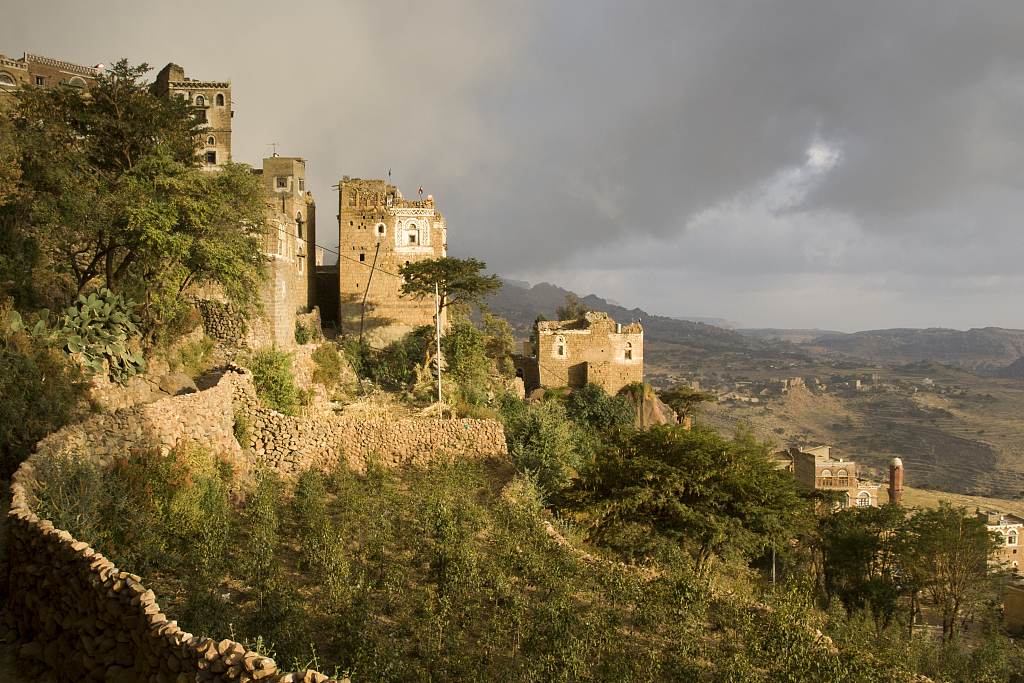
Qat plantation in Yemen. /VCG Photo
Qat plantation in Yemen. /VCG Photo
The fresh leaves and tops of the plant are chewed or dried to make tea. After consuming the plant, people can become talkative and hyperactive. It's a controlled substance in many countries including Germany and the UK.
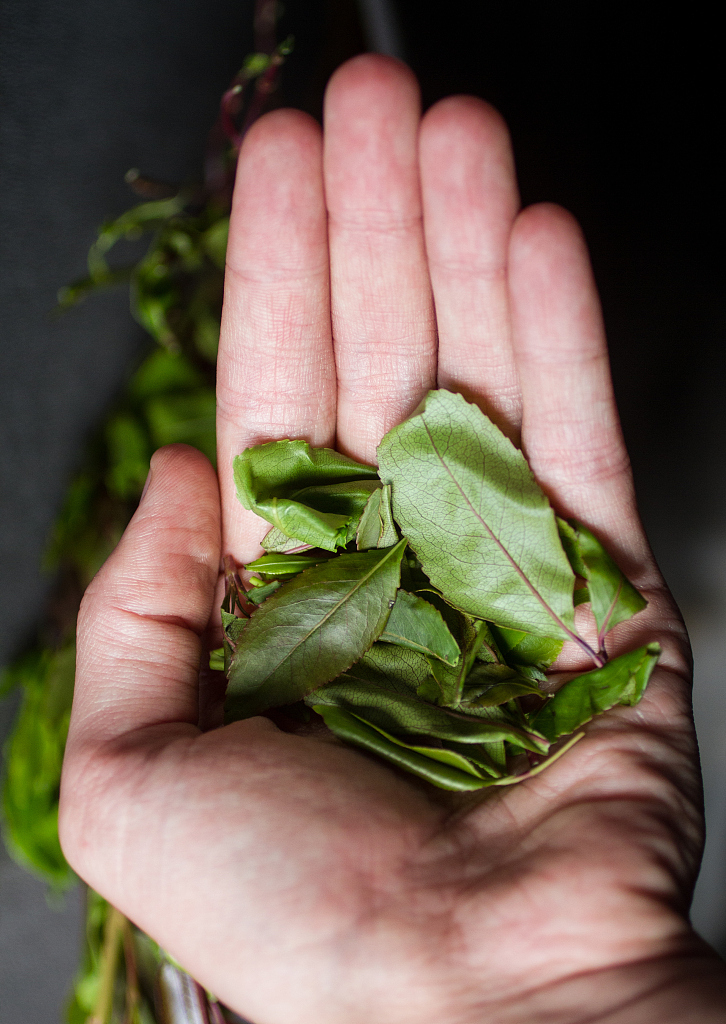
Qat leaves /VCG Photo
Qat leaves /VCG Photo
The fondness for Qat is long-held in Yemen. It's a daily activity for many people. Side effects of long-term chewing Qat include teeth-darkening and increased blood pressure.
About 'Plants & Nations'
"Plants & Nations" is a series of articles and pictures about common plants in the world. It serves as a guide to beautiful plants from different countries.
(Top image via VCG)
(If you want to contribute and have specific expertise, please contact us at nature@cgtn.com.)

SITEMAP
Copyright © 2018 CGTN. Beijing ICP prepared NO.16065310-3
Copyright © 2018 CGTN. Beijing ICP prepared NO.16065310-3